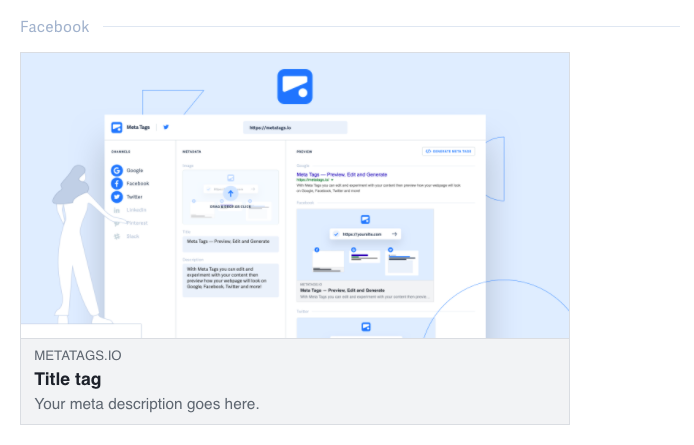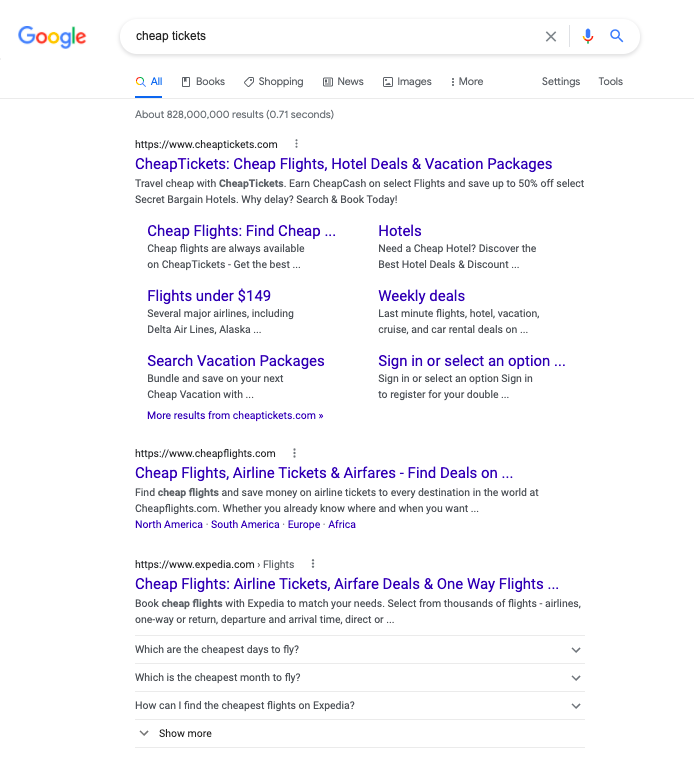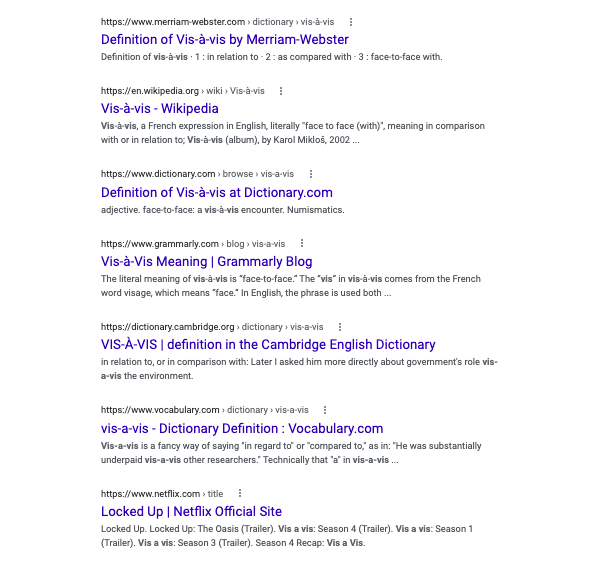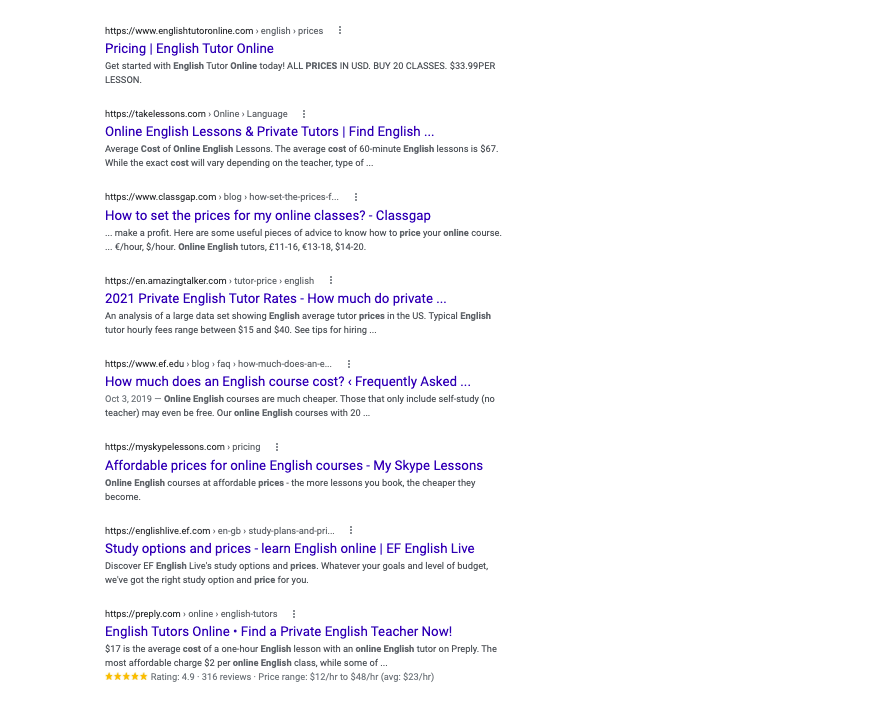What is a meta description?
There are several factors that influence your site ranking. Meta descriptions are one such factor and may increase the chance of viewers landing on your website and raising your position in the SERP.
Basically, a meta description (also referred to as a meta description attribute or tag) is a short piece of text introducing your page’s content. It is written as an HTML code and will be used by browsers, search engines, and other web services to display information about your site to potential viewers along with a page title (title tag).
Here are some meta description examples.
- This is how meta descriptions appear on Google:

- This is how meta descriptions are displayed on Facebook:

If you are wondering where to check meta descriptions of specific websites, take advantage of dedicated tools like Meta Tags, which we used to create the preview in the example above.
- This is how meta descriptions look in HTML format.
<!-- Primary Meta Tags -->
<title>Title tag</title>
<meta name="title" content="Title tag">
<meta name="description" content="Your meta description goes here.">When meta descriptions matter
Since meta descriptions are the first thing, along with titles viewers, that potential viewers see on the SERPs and social media feeds, they can prove useful for promotion. A proper keyword-oriented meta description may increase your click-through rate in the SERP, even though it won’t improve your site’s ranking on its own.
Remember that if you don’t set a preferred meta description, search engines will come up with one for you. This is not always beneficial, as an automatically generated meta description can miss important information or even extract irrelevant data.
Meta descriptions can be useful for each post you write, but be sure to create them for your key posts with the most traffic.
How to write meta descriptions
There are a few critical elements that you need to consider when creating an effective meta description strategy. We gathered seven practical tips so that you can write meta descriptions that are wired for success.
Tip 1: Expand on your title
There is a subtle, yet very important difference between the objectives of the page title and meta description. For example, compare email subject lines, which help draw attention, and the beginning of an email’s text, which adds context to help users understand what your letter is about. Similarly, a page title presents the topic of a post, while a meta description provides extra information about the topic.
So, when writing a meta description, start by expanding on your page title and thinking about what pieces of context can help users better understand what your post is about. While page titles don’t vary greatly for the same topic, meta descriptions give you a chance to differentiate your site from other sites with similar offerings.
In the example below, you can see how companies with almost identical page titles are fighting for the spotlight by deploying unique angles in their meta descriptions:

Tip 2: Match search intent
Search intent is the motivation behind the viewer’s query. This is where you need to put yourself in your potential customer’s shoes and think about what information they are seeking.
Let’s take an example of the search querry “vis a vis” and see what meta descriptions the related pages offer. In this case, posts on the first page of the Google results share the word’s definition in the meta description, as this seems to be the intent behind the query.

In the case of a price-oriented search query, such as “english online price”, blogs seem to include price information in their meta descriptions.

Tip 3: Keep it short and sweet
If you are wondering what should be the meta description length, try to keep your text as concise, laconic, and straight to the point as possible. Texts longer than 120-160 characters are likely to be truncated by Google to fit the device properties. For desktops, the text length is ~160 characters max and, for mobile, ~120 characters max. This same rule applies to the title tag. Even though there is no limit on how long it can be, try not to exceed a maximum of 60 characters.
Tip 4: Include target keywords
While your title and meta description should both be optimized for keywords, it is important not to go overboard. Even though there is no maximum allowed number of keywords, your ranking can suffer from “keyword stuffing”. Usually, Google will detect if the information used in the meta description is out of context and does not bring value to the reader.
So, how do you include keywords in your meta description without being penalized? Aim to craft appropriate, customer-centric content and use keywords in moderation with no repetition. As a rule of thumb, it is recommended that the total amount of words in your text consists of no more than 10% keywords.
Tip 5: Write unique descriptions
Unique meta descriptions help distinguish one page of your website from another. They are SEO-friendly and can help grow your ranking, while identical descriptions are favorably considered by Google. Therefore, it is better to have a few thoroughly-crafted meta descriptions for your key posts than duplicating the information for all your pages.
However, you may sometimes see different titles and meta texts come up for your pages in the SERP. So, if you’re wondering “Why Google doesn’t show my meta description?”, make sure that you haven’t violated any of the Google guidelines, as the search engine may use different meta descriptions to better fit the user’s query. If this happens and you still prefer your own meta description, reach out to Google via Google Search Central Help Forum.
Tip 6: Don’t use quotation marks
Since a meta description is written in HTML, certain symbols might affect and break the code. Using double quotation marks is a very common mistake that might jeopardize your meta description performance. Avoid these punctuation marks whenever possible and, if you still need them, use a single quotation mark instead.
- Double quotation mark (“ ”) ❌
- Single quotation mark (‘ ’) ✅
Tip 7: Match your content
Never include information in the meta description that does not correspond with the actual data you published. If viewers land on your page and don’t find what they’ve been promised in the meta description, they will quickly leave. This will then send negative signals to search engines and might negatively impact your SEO rankings. Not to mention the nasty aftertaste your viewers will have after realizing that they’ve been tricked.
How to create the right meta description
We’ve covered some of the best practices for meta descriptions in this blog. While it is a continuous process, make sure to incorporate these seven tips when getting started. There is no need to reinvent the wheel, so don’t hesitate to gain inspiration from your competitors. Knowing what works for others and what you can do even better is a good way to kick-off the process of crafting your own meta descriptions.




